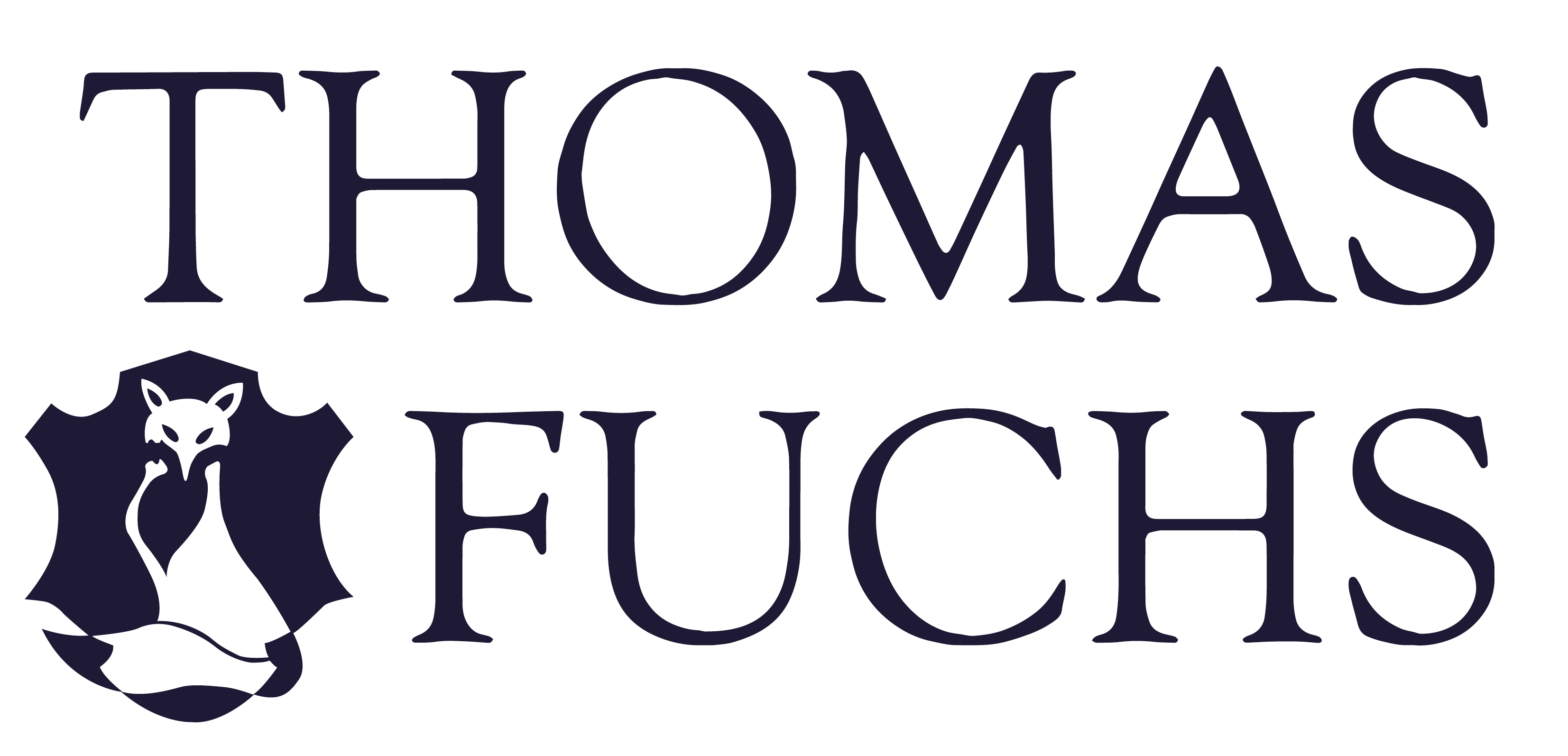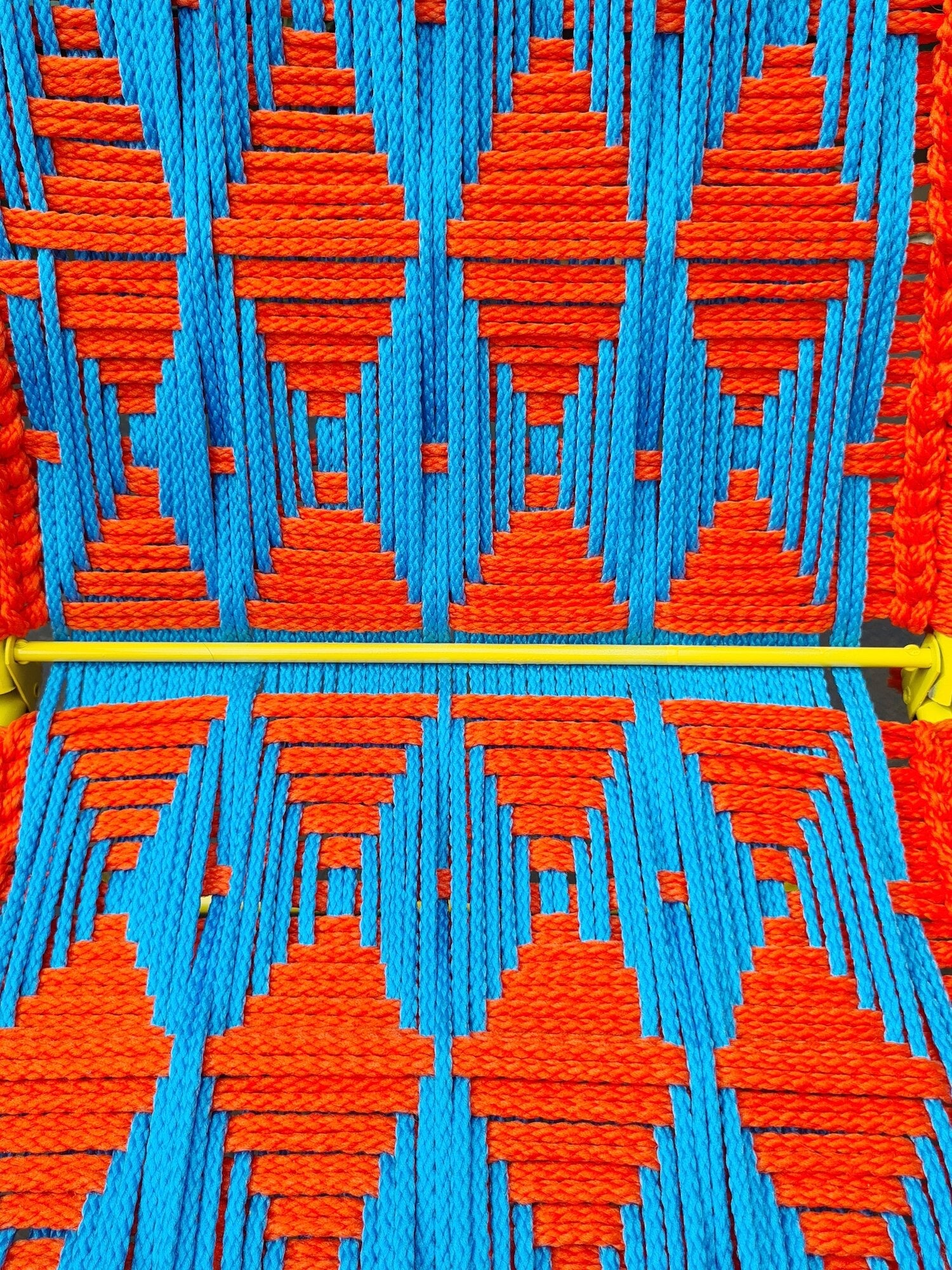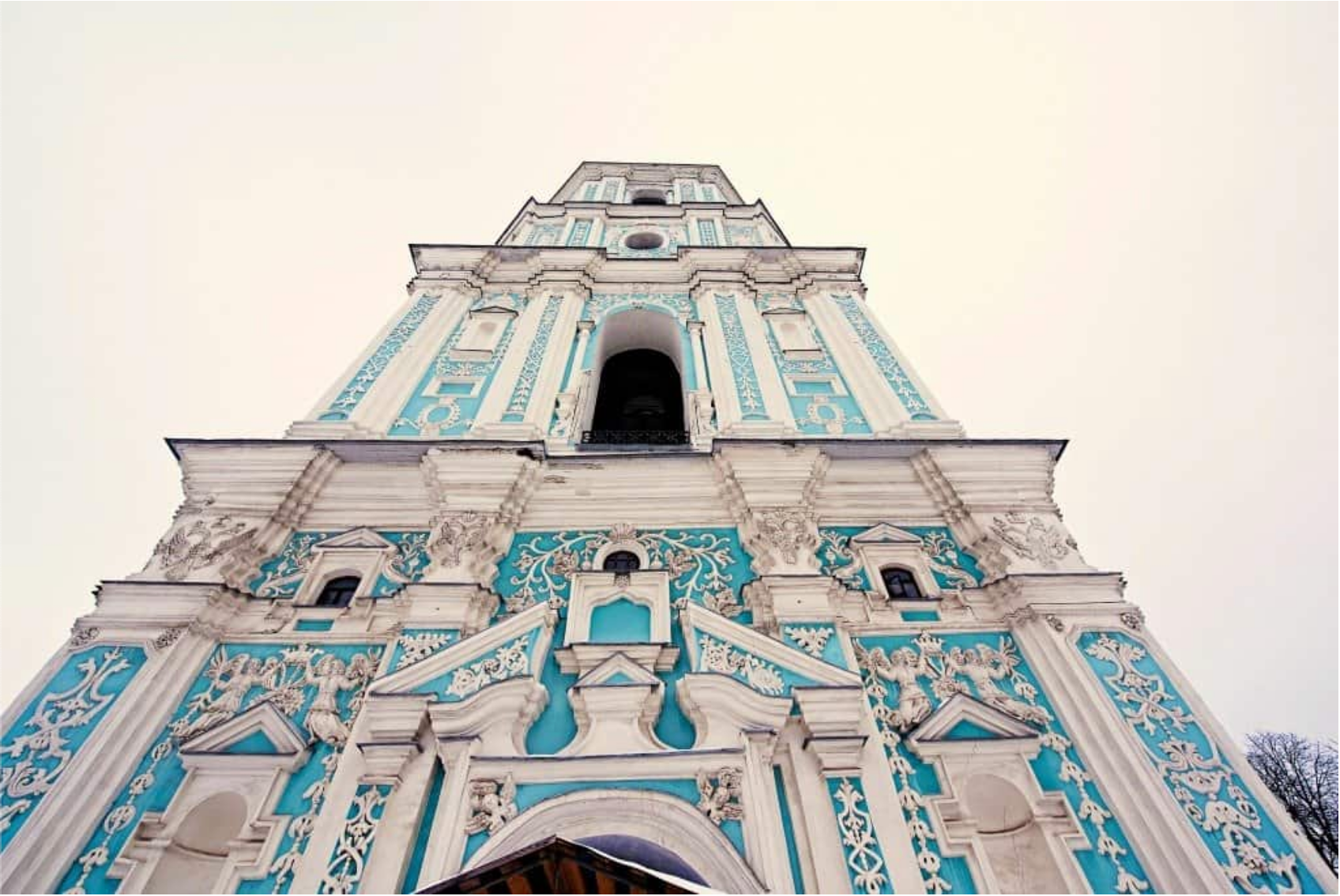
VICTOR DEUPI - A TRUE RENAISSANCE MAN IN MIAMI

Author and Art Historian Professor Victor Deupi
Welcome to our ONLINE STORE and blog.
As a barware, lighting and home accessories design company, we at Thomas Fuchs Creative specialize in handmade goods. Every week we give you behind the scenes to the people, places and things that inspire us.
This week we introduce you to a true renaissance man Victor Deupi. Victor is an Author, Art Historian and Professor at the University of Miami. Not only has Victor written several books on architecture in addition he has covered "Wineries Of The World (Rizzoli) as well as Stables: High Design for Horse and Home (Rizzoli) showing his veneration and versatility in all things design.
Wineries Of The World - Available on Amazon Click This Link
I have enlisted a dear friend who is well versed in architecture and alike, Jonathan Hogg, to interview Victor.
Jonathan Hogg, who is with Ferguson & Shamamian Architects in NYC, is a Trustee of the Hispanic Society Museum & Library as well as a board member of Sir John Soane's Museum Foundation in London.
I will hand the proverbial "Mic" over to Jonathan....
Stables: High Design for Horse and Home - Available on Amazon Click This Link
JH: Great, so can we talk a little bit about your background prior to college, and how you made your way in architecture?
Victor : My parents are both architects, having studied architecture in Cuba. They came directly to Washington DC in 1961, because the Cuban architect Max Borges, of the Tropicana fame, was able secure work for them in the DC area. So, I grew up in Northern Virginia in a household that “screamed” architecture. I want to say a couple things about it though, because even though we were Cuban, I had a kind of split childhood because by day I would go to school with all kinds of North American kids, and then at night and on weekends I was with my Cuban family and friends, with everyone speaking Spanish.
But then my parents were also very modern - they liked the Beatles, Picasso, and Frank Lloyd Wright. I now understand why - because if you look at Cuban modern art it's very much inspired by Picasso: it's cubic, but it's still recognizable as figurative. And although it is geometric, it isn’t like New York abstract expressionism. As for why my father loved Frank Lloyd Wright, it took me a while to figure this one out, but in Cuba a lot of the modern architecture would adopt aspects of Wright’s work: for instance, pinwheel plans instead of a single volume house with an adjacent garden or patio.
The pinwheel means that every room has three sides of window for ventilation, perfect for a kind of a Cuban villa, as well as for the climate. I didn't realize this when I was young, but I do now. Another thing my parents had was a lot of Scandinavian furniture, which again when I was young, I didn't understand why, but now that I've studied a great deal about it, I understand that it’s made of wood, like cane and wicker furniture. Barcelona chairs don't work particularly well in Cuba unless you like to swim in your own sweat. I get that now, and since I grew up in that kind of environment, I knew very early on I was going to be an architect.
JH: Very cool. How did you choose you the colleges you considered? Why did you ultimately choose UVA?
Victor : I did try other colleges - I looked at a lot of places. I was considering Cornell, Carnegie Mellon, Virginia, and Virginia Tech, but I remember when I visited UVA the first time, it was during their spring break, and nobody was there. I remember I woke up one morning super early - it was foggy and misty, and I went for walk around the campus and the moment I walked on the lawn in the fog in the mist, it took my breath away.
JH: In your early days in architecture school – did you emphasize your time in design studios, or did you find yourself gravitating to other facets of the profession? How might you describe your trajectory from college to where you are today?
Victor : The other thing about UVA was because of the type of professional degree it offered. I realized I wanted to go 4:3, in other words, I wanted to go to an undergraduate program that was not a professional degree. I decided I didn't want to do the five-year program straight through – so I decided I wanted to do a 4-year program instead, and then get a masters - so that that pretty much eliminated the other choices. And I got into all of
them. Also, when I was younger, I always wanted to have my own practice in DC, like my parents – even though they mostly did interiors. But I also thought I'd forge my own way through. In my first year of architecture school, I was quite taken by the academic environment. I realized one day that I wanted to teach as well. I didn't know at that moment what that would mean, but I understood it as practicing and teaching. When it came to graduate schools, I applied to several. I didn’t get into all of them, but I really wanted to go to Princeton to study with Michael Graves, but I was not accepted.
I didn't get into Harvard either. But I did get into Columbia and Yale - and when I went to visit Yale, Tom Beeby was the new dean - he convinced me. And Thomas Gordon Smith was visiting professor as the time, and Tom knew from my portfolio that I was interested in classicism, and I was from UVA. So, Yale was without a doubt my choice, and there were so many great teachers and colleagues there. My final semester was with Demetri Porphyrios, and after I graduated - he offered me a job and I went to work for him in London. But the other thing that struck was that Demetri had a Ph.D. - and he was a teacher, and I realize that I really wanted to do that. I felt that after seven years of architecture school, that my writing skills and my theoretical skills were still not what they should be. So, after a year working in London at Demetri’s office, I applied to Ph.D. programs. Again, I didn't get into Princeton where I wanted to study with Allan Calhoun.
The University of Pennsylvania had Joseph Rykwert - and it was the best decision I had ever made in my life. Joseph was not just my teacher, and mentor, and friend – Joseph taught me how to think. I know I was thinking before that, but I wasn't thinking about thinking. I wasn't thinking about how I thought. So, Joseph completely opened my eyes, my ears – hands down he is the most influential person in my formation as an architect and teacher.
University of Miami School of Architecture
JH: How did you end up at the University of Miami? Did you go through several other schools first? Were you living here originally? Were you and Jill already married?
Victor: I did work at quite a few places, but I'm not going to go into that as it would take too long to discuss. However, I was a visiting professor twice at UM, first in 1998, and then in 2009. Jill and I were living in Connecticut, I was teaching at NYIT. I had taught at Notre Dame, but that didn't work out well (a story for another time).
JH: So you would do that Throgs Neck commute from Greenwich, every day to Long Island?
Victor : Sometimes I taught at Old Westbury, but I also taught in Manhattan. I had a three-hour morning seminar, and a three-hour afternoon seminar. And Jill got headhunted by UM – and when Donna Shalala offered her the job she said, “And, by the way we have something for your husband.” It’s been great in Miami and at UM … eight years.
JH: Eight years? Wow - fantastic. Ok, this is where you might have to correct me. My question was, you’ve written four books in architecture, and one on the artist Emilio Sanchez. Can you talk about the genesis of each of these ideas - and why those subjects inspired you?
Victor : Technically seven books have been published to date, and two on Emilio. Now of the seven, a couple of them are co-written with others. But my first book on Spain and Rome was basically taking my dissertation and turning it into a book. Which is not always the easiest thing to do. I was advised by Joseph that “The only people who read dissertations are Ph.D. students and their advisers. No one else reads them.” I also wanted to add that initially I was drawn to the 18th century because Jefferson, Yale, Penn (Franklin) – all three universities are enlightenment foundation schools. So, I was drawn to the Enlightenment, and having worked in London for Demetri, I knew I wanted to do something about the 18th Century.
I thought Spain would be a good place to go because I understood Spanish, and I could work it. Whereas French, German, Italian – everything else would’ve been much more difficult. And while I was going through the process, I went to visit Joseph when he was a fellow at the Getty in Los Angeles. And at the time, the interim director was Thomas Ford Reese, who is now the Director of the Latin American Studies center at Tulane. Tom was a pupil of George Kubler at Yale - and he had done some previous work in Spain. So I met him, and we were talking, and he said “nobody's really explored the relationship between Spain and Rome in the 18th century. There’s a lot on Spain, but no has explored Spaniards in Rome.” That was it …
Architectural Temperance - available on Amazon Click This Link
JH: I actually planned to ask you about your first book, “Architectural Temperence: Spain and Rome” – as I found the topic very interesting. I don't want to provoke you into saying anything specific, I just want you to speak your mind. Would you say that the architecture of Spain prior to the Bourbon rule was more interesting in that it was not beholden to western traditions?
Victor : The reason that book focused on 1700-1759 - the era of the first two Bourbon monarchs – was that what struck me is the fact for the first three or four decades of the 18th century there was effectively no change. There was a change in monarchy, but those late Baroque Churrigueresque and Spanish Rococo architects and artisans were continuing to practice, and it wasn't really until the middle decades of 18th century that we begin to see a more discernible Italian or French influence shaping architecture and art. With the formation of the Spanish academy, officially opened in 1758-1759, when Charles the third becomes king, that’s when really Spain becomes neoclassical in the traditional sense. It is really interesting that at the beginning, architectural change came very slowly.
JH: How many architects of that era were going to Rome, or going to Italy, in the manner of the grand tour?
Victor : Many after the establishment of the Academy. So what I traced are the forerunners - the ones who were sent on a royal pension, to test out the waters and see what would need to be done to formulate an Academy? So it was like the precursors that I was
studying, and there were roughly five or six architects, 10 painters and sculpture, there weren't that many. And some were going on a pension, and some of them on their own. One of the guys I was most interested in was José de Hermosilla, and I wrote a chapter on him (there was a retrospective on him a few years ago, in Madrid, for the anniversary of his birth in 2015) on his time in Rome. He worked for Ferdinando Fuga, he was very active and became one of the directors of the Academy in Madrid when he returned, formulating the program of education.
There weren't that many, but they were engaged, and interestingly – the Spanish community hired architects in Rome anyway to represent them. Carlo Fontana, though Italian, was a very active participant in that kind of architectural diplomacy. A lot of it has to do with architecture and politics - a lot of ephemeral structures built to commemorate the marriage of king, the birth of a dauphin, the marriage of a principessa … these ephemeral structures were extraordinary, in particular when Phillip V became king, and entered Madrid - and they did it again in Naples, in Parma, in Florence.
Transformations in Classic Architecture - Available on Amazon Click This Link
Every book is an exploration, and that one just took me on such an extraordinary journey. What it also did is it brought me to America. One of the chapters is on the new Spanish Trinitarian church on the Via Condotti and the Via del Corso … It was built in the 18 century and the architect Hermosilla was involved, as were Spanish painters – and the money came from Peru. A Spanish Trinitarian, very influential, the Archbishop of Lima - was a temporary viceroy for the Spanish crown, and the money came from the mines of Potosi (in modern day Bolivia) - but all that money from the Viceroyalty of Peru was given to the Spanish Trinitarians to build a new Spanish church in Rome. So, all of a sudden, I was seeing the thread of Spain, Rome, Peru - and it occurred to me that 1750 was a moment where I could study anything I want. I could go anywhere: there's Medieval, there's Ancient, there’s Modern, there's Renaissance, there's New World, there's Old World. Spain of 1750 - I can go anywhere in the world I want, with very few exceptions. I liked that. It was like my grand tour.
JH: So I want to ask you question: how familiar are you with the Black Legend?
Victor : I haven't really spent any time on it. My feelings are that Spain didn't do itself any favors with the Edict of Expulsion or the Inquisition. Charles V - Holy Roman emperor - was not particularly well liked in Europe. He was the one who was responsible for the conquest of Mexico, and the Incas as well. He was not a very likable guy in retrospect. Despite that history, one of the things that I came across in my own book, is that Spain wasn't that much of a back water at the start of the 18th century. It’s a myth, a legend. Some of the archaeological excavations of antiquities in Spain are parallel with those in Sicily and southern Italy. Spain in the 18th century was a very dynamic player in European culture and diplomacy.
JH: I had always wondered if the reason the Grand Tour had it's very specific path - as if it was essentially the spine, or the intellectual trajectory, of western civilization, and how it specifically avoided Spain - was for reasons of rivalry…
Victor : I don't think so. I mean Spain had the pilgrimage to Santiago, and that pilgrimage was not just from France along the northern coast, there were paths through Spain to Santiago. So I think within the tradition of the Grand Tour, Rome was the focus, but Istanbul/Constantinople, Santiago, and Jerusalem were other trajectories. It wasn't exclusively Rome - Venice and Florence played a part as well.
Emilio Sanchez in New York and Latin America- Available on Amazon Click This Link
JH: How did this early dissertation feed into your other body of work? Your thinking, how it influenced you?
Victor : Well, the first book opened the door to Latin America, and then Andres Duany told me I should go to Cuba. At which point, I realized as a scholar – I could go to Cuba. So, it opened the door to the Americas. I also think that it's very hard to be a scholar where the primary material of your research is far away from you, especially today … 50 years ago, scholars would spend the summer in Madrid, Rome, or in Paris … In today’s world it doesn’t happen like that.
When I was living in Connecticut and teaching in New York, I was working in the archives that were available there. And in Miami, I'm working on the archives on Cuba that are available here. So, Cuba became increasingly more of the focus, and I found Emilio Sanchez by accident one day when I was at the Met doing final research on the architecture of the Spain and Rome book. Jill and I were going to lead a tour of Cuba for the museum that she was directing at the time - Fairfield University - and I thought what does the Met have on Cuba? The first thing I saw was a graphite drawing by Emilio Sanchez, of a house in the countryside. And I looked at the drawing, and thought it was an academic drawing from the 19th century, no doubt.
Lo and behold - it was from 1959 by an artist named Emilio Sanchez, and I’d never heard of him. Fidel Castro is in power - and this is going on? Who is Emilio Sanchez? I kept looking for works through the Met archives because there was little online, and the attendants brought me boxes with 250 works on paper – drawings, graphite, ink, watercolors, lithographs, sketchbooks - all of Cuba in the 40s and 50s, none of which had been properly archived.

Emilio lived in New York and gave his works to Hyatt Mayer, who was the head of Prints and Drawings at the Met in the 60s. Hyatt was his favorite curator. He was friends with Bill Lieberman at MoMA, but MoMA didn’t want anything to do with him for whatever reason. Lieberman was head of prints and drawings at MoMA, at the time and even though he supported Emilio outside of New York, he could not help him at MoMA. Alfred H. Barr was just not interested, so Emilio took the works to Hyatt Mayer at the Met.
JH: Are they being cataloged?
Victor : Yes, I was the one who helped them do so … So, when I saw that drawing, I didn't know anything about Emilio - but I said: that's a project. So, my first book on Emilio was all about the period prior to the Revolution, from 1921 to 1959/1960 - and the book is about his formation, his early career, and then in 1960 he leaves Cuba and never returns. There may be another book that I do, the next half - but I’ve got other projects I'm working on now. And I did the Emilio Sanchez centenary exhibition last summer with the USPS inauguration of the “Forever” series of stamps, which was great but I’m taking an Emilio break.
But I have other scholarly interests, and when I first came to Miami and I told the Dean that I was working on this Emilio project – he suggested I do a similar project on Cuban architects - the ones that worked in Cuba and the ones who, like Emilio after 1960, worked elsewhere.
JH: Is that how “Cuban Modernism” came about?
Victor : Exactly.
Cuban Modernism, Author Victor Deupi & Jean-François Lejune Available on Amazon Click This Link
JH: Was Cuban modernism documented previously? Or well documented at all?
Victor : Well, there's stuff in Cuba - but the problem with Cuban scholarship is a lack of scholarship. Cubans write books, but they don't footnote, they don’t provide bibliographies, they don't caption. Their scientific research is done in a way to keep the information on the island, and to prevent people from getting it. Terribly frustrating. So that is what my colleague Jean Francois Lejeune and I decided to do. The idea was first to do an exhibition, because I find that a great way of doing research is to start with an exhibition, or an essay, that forces you to do some preliminary research and formulate some assumptions, and then test it out. And then the book follows.
We did an exhibition at the Coral Gables Museum in 2016-17 titled “Cuban Architects at Home and in Exile”. And we relied on the local community with their local archives.
JH: Well Victor – thank you so much for sharing this rich history of your interests and scholarship. I’m sure there is another interview here on your other books, as well as future projects!
Interview conducted by Jonathan Hogg













Leave a comment
This site is protected by hCaptcha and the hCaptcha Privacy Policy and Terms of Service apply.